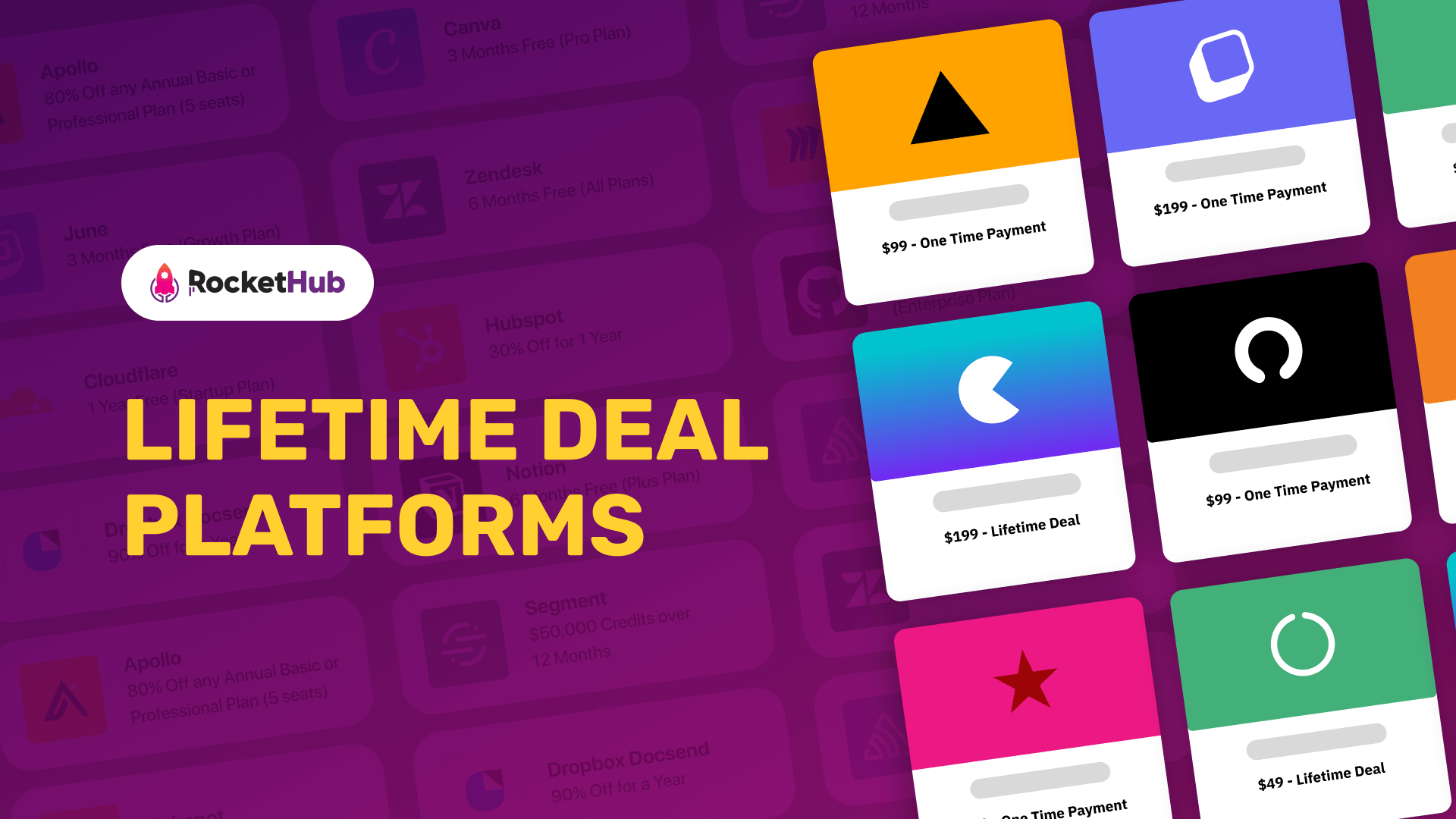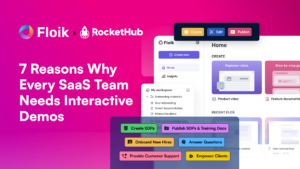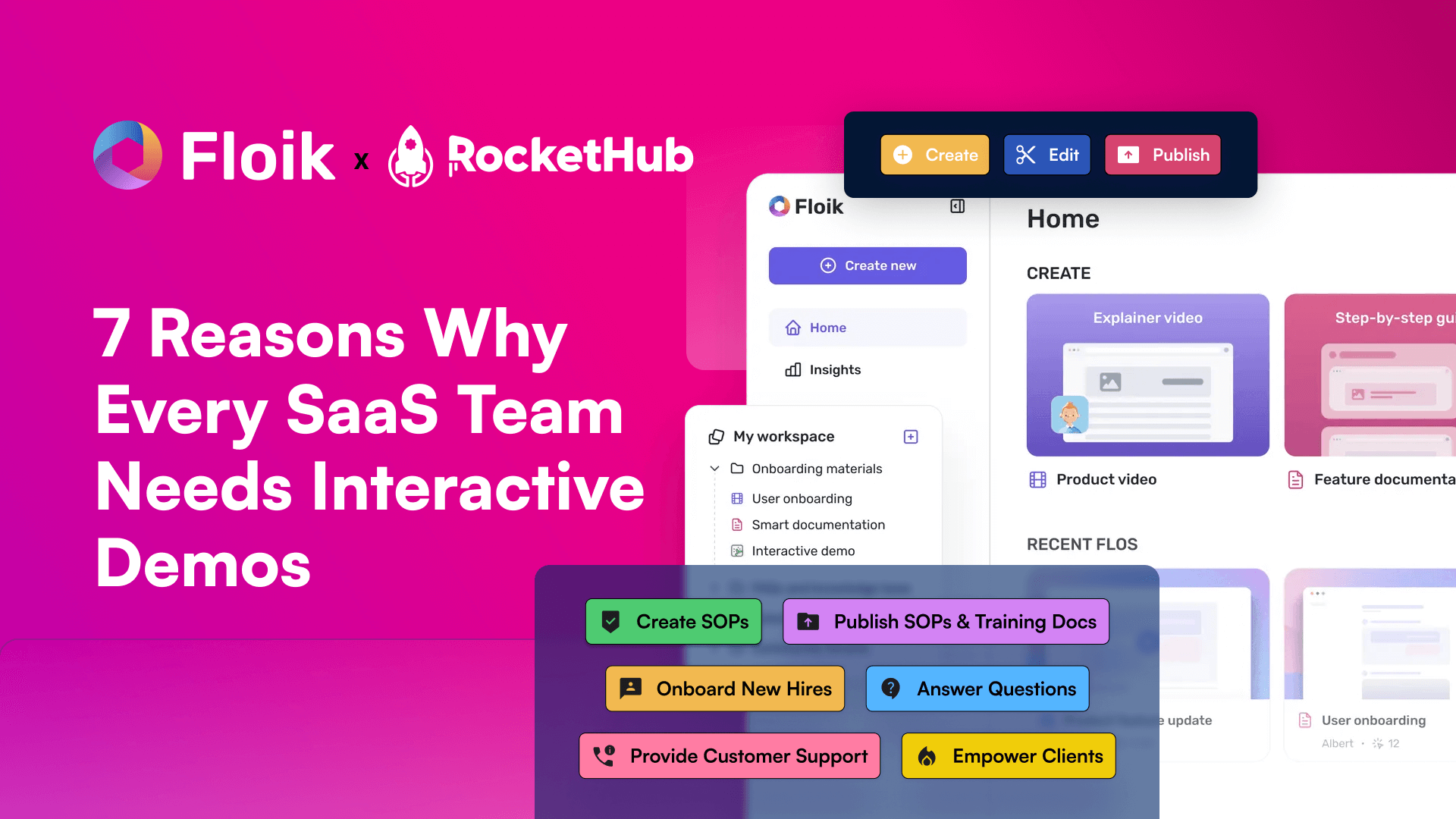
Content Optimization Guide
- RocketHub Team
- November 9, 2021

SEO is a fickle power: when it works, it can do wonders for website traffic. When it doesn’t, you suddenly find yourself in empty no man’s land somewhere on the second or – gasp! – third page of online search results, your content relegated to the dusty, abandoned corners of the web no one visits. To avoid this horror scenario, embark on a quest of content optimization and transform your meh rankings into oh-my-god-what-just-happened search engine results.
But wait, what is content optimization?
A simple answer is, content optimization is a process of identifying website content that does not perform well SEO-wise, then updating and tweaking the content to make sure it does. The good news is, while it may sound complicated, it isn’t! As long as you’re armed with the right information and tools.
SEO is not static, it’s dynamic, and there are always changes and fluctuations to watch out for. Constantly updated search engine algorithms, changing customer behavior, seasonal shifts, and other factors actively influence SEO all the time.
Content Optimization Explained
Content optimization is the key to staying on top of it and keeping an eye on your Google Analytics. If you start seeing reduced traffic and higher bounce rates, it may be high time for content optimization. Equally, checking your rankings every once in a while is another good indicator. The search engine bots crawl your website all the time. If the content is found lacking, your rankings drop resulting in ever-shrinking traffic numbers.
Content optimization is the most powerful tool to prevent this from happening or, better yet, increase your already decent search engine results. There are some simple steps to follow to make sure all your content is highly optimized on every page:
1. Identify poor-performing content
2. Select content that can be optimized and delete content that can’t
3. Use a systematic, step-by-step approach to optimize the content
4. Monitor your data and track progress
5. Rinse and repeat
Content optimization is an ongoing process but done right, it can massively increase your website traffic and boost your search engine rankings to new heights.
Why Should You Optimize Your Content
Even if you create stellar, keyword-rich, and user-friendly content that performs well, nothing is ever still or static online. Search engine algorithm updates aside, there are countless other factors that impact your rankings:
- New updates in your industry or niche. For example, if your website is focused on software solutions, content that worked in 2020 may no longer work in 2021. Why? Because tech is being developed and updated all the time
- Newsworthy content: if your website is about the latest trends or news commentary, yesterday’s news is, well, yesterday’s news
- Seasonal shifts: this is especially important to eCommerce sites. Content discussing fall fashion trends or spring furniture collections will be irrelevant in the summer
- Changing customer behavior: the way people search for information and consume content is ever-changing
Content optimization is the answer to all of this. Fully optimized website content will ensure that both the almighty algorithms and the people searching online are happy. Typically, the result is compounding. Every piece of content you optimize will add value to all the other content pieces it’s linking to. The more pages you optimize, the better overall results you will see.
Content optimization is key to:
- Rank better in organic search results
- Increase website traffic
- Generate leads
- Boost your online presence and visibility
And the most rewarding part is, the results are instant. Once you optimize and republish existing content, you may move up the ranking positions almost instantly! Thanks to those hard-working Google bots.
When Should You Do Content Optimization?
The short answer is, now. In an ideal world, all your content should be 100% optimized at all times. There should be no outdated, poor-performing, or low-quality content on your website at all.
Alas, most of us don’t live in this SEO utopia. In addition, optimizing the content too often can sometimes backfire! If you do this on a daily or weekly basis, it may confuse the search engines.
On the other hand, putting it off for too long means your rankings may start to slip quickly.
The best approach is to first evaluate your existing content and look for red flags. Using Google Analytics or website audit tools like Moz, SEM Rush, or Ahrefs, you can identify:
- Your website traffic changes
- Changes in user behavior on the website
- Your rankings on search engines
Using these metrics, pick out content that is performing the worst and optimize it first. Then, move up to better-performing content and repeat the process until the entire website is in top shape.
This method is a great first step in content optimization, as it will help you pinpoint content that needs sprucing up. However, there are several other factors that may impact the performance of your content. Let’s take a look at each of them.
Holiday, Events, and Seasonal Changes
This is especially important if you run an eCommerce site. Holiday and seasonal changes heavily impact the way people shop online. If you run a blog on your eCommerce website, optimizing existing content to cater to these seasonal changes can instantly boost your rankings.
For example, adding content on Christmas shopping or spring break accessories may push you higher up those search engine results during the winter and spring months.
Alternatively, you can incorporate content about surviving Valentine’s day as a single mum or add Easter breakfast recipes to your existing content if you run a mom blog or a cooking site.
Ideally, it’s best to optimize content to account for seasonal and holiday changes a month or two leading up to the new season, especially if it’s shopping-related.
Finally, people behave differently during the winter and summer seasons. For example, in winter, more people are likely to search for good Netflix shows to watch. Whereas, during the summer months, they may be seeking outdoor activity ideas.
This is not to say you should start adding movie reviews or talk about hiking trails on your website that sells photo editing software. What you could do is to get creative! Add content talking about how to edit photos to give them a dark and broody look a la Peaky Blinders or post some tips on how to edit images taken outdoors.
News Cycles
What do presidential elections, celebrity scandals, or new social movements have to do with your website? Nothing, if you run a blog about interior design or own an eCommerce site selling baby toys. On the other hand, if your industry or niche can in any way be impacted by the news, it may be worth sprucing up your content relate to it. For example, mentioning a new environmental agreement if your focus is sustainable homes can add relevance to your existing content; adding a comment on a new social movement can make a difference if your focus is public relations.
Search Engine Results
As mentioned before, search engine algorithms tend to get updated. So, frequently it may seem like a mission impossible to always stay on top of these changes. However, while you do not need to obsessively research algorithm updates all the time, it’s important to keep an eye out on metrics that tell you something is afoot. For example, if your rankings are starting to slip consistently, it’s a sign your content could benefit from optimization. To stay in the loop, use tools like Ahrefs or SEMrush to re-evaluate your content using markers like content format and user experience, then optimize it accordingly.
Changes in Impressions and Clicks
If you’re starting to see a drop in your website traffic, get nerdy about your Google Analytics and Google Search Console. Go through each piece of content on your website and ask yourself these questions:
- Is there certain content that gets the least traffic?
- Which content is being read for the shortest time?
- Which content gets shared the least?
- Is there content that attracts the highest bounce rate?
- Which content gets the least engagement and comments?
You can easily pinpoint content to optimize using these metrics and get to work.
Where to Start and What to Do
The first step in content optimization is evaluating the existing content, identifying problem areas, and fixing the issues. First and foremost, evaluate which content can be optimized and which should be deleted altogether. Sometimes, if the content is poor-quality and hopelessly outdated, it’s best to simply get rid of it. Then, use tools like Google Analytics, Google Search Console, SEMrush, Ahrefs, and MOZ to pinpoint the key areas where the content you want to keep is not performing well.
It may be your keywords, the average time users spend on the website, bounce rates, meta descriptions, poor quality content, broken link, lack of inbound links, the length of the posts, how easy it is to consume the content… the list goes on, and it‘s crucial to identify exactly what the issues are.
Once you’ve identified content you want to optimize and key problem areas, divide it further by priority. Work on content that will benefit from optimization the most so you can see results fast. Then, work your way down to the rest of the content and update it as you go along.
To make sure your content optimization yields the best results, go over each of these areas:
Updating Website Speed and User Experience
This may seem like an obvious one, but because it’s so simple, lots of companies actually overlook it. Your website speed is absolutely crucial. If the website is loading slowly, people are more than likely to be put off and click off. In addition to leading speed, evaluate how easy it is to navigate the website, what the overall user experience is like, is the layout eye-catching enough. Problems like website speed and navigation are easy to fix. However, they can make a huge difference in your content optimization process.
Updating Titles & Descriptions
Content titles and meta descriptions are extremely important. The title of the post must include the main keyword you’re targeting in your content and be intriguing and informative enough to hook the reader at first glance. The meta description is the little excerpt that appears under the title in the search engine results; this is your chance to dazzle the reader by providing them with a short summary of what the content covers. Keep the meta description show, sweet, and to the point, and make sure the target keyword is included in it. Better yet, work a CTA (call to action) in it to further entice people to click the link.
Add Depth
The days of short, superficial, and generic content pieces are long gone. Now, people search with an intent to consume well-written, long-form content that thoroughly answers the question they have. Search engine bots evaluate how well you match this intent and how well you explain the topic. This is why adding depth to your existing content is an important piece of the puzzle: expand on the topics you cover, add more information in the form of images, videos, infographics, and other media, and make sure your content is high-quality and offers value to the reader. If your current content pieces are around 800-1,000 words, consider adding another 1,000 – 1,500 words to expand and enrich the existing content and make sure it thoroughly answers the questions people are searching for.
Add Headings
How easy it is to consume your content? One simple trick to make the content more visibly pleasing and easier to read is to divide it using headings. Headings break up the wall of text and give readers more information when they’re just skimming the content, and they can better organize the content you’ve published. In addition, search engines take the H1 heading into account when evaluating the main topic of the page, so be sure to use your keywords in the headings as much as is reasonable.
Make It Easier to Read
To add to the ease of reading, use the SEO Yoast tool to evaluate the „readability“ of your content. Shorten your sentences, tighten up the paragraphs, and use bullet points, subheadings, and callout boxes to make the text more scannable.
Adding infographics or a table of contents can also help readers consume the content faster and more effectively.
Update Images
Even if your talents lie with the written word, images are important for content optimization. Adding relevant images can further better user experience, and combined with the use of Alt-attribute descriptions, it boosts your SEO performance. Search bots do not just crawl text – they crawl the images, too, and the more information your images contain, the easier it is for the bots to evaluate them.
Finally, make sure that your images load fast. Don’t compromise quality – your images need to have high resolution – but look for ways to reduce the file size to ensure all images on your page load fast.
Add Videos
YouTube is now the second biggest search engine after Google, and embedding videos in your content is a fantastic way to boost your online visibility. If you have a YouTube channel, adding relevant videos to blog posts and landing pages will significantly increase your rankings.
In addition, adding video content helps improve the existing content in richer, more meaningful ways. Once again, the goal of the search engines is to best match user intent with content; the better your content answers a question or explains a topic, the better your website will rank. Adding videos can help achieve this in no time.
Mobile Friendly
If your website is not mobile-friendly, you’re dead in the water. More and more people now consume content on their mobile phones or tablets rather than desktop or laptop screens and optimizing your website for mobile is the number one priority if you haven’t done so yet. Think about how your content looks on a smartphone screen: is it easy to consume and scroll down? Have you peppered it with relevant images, videos, and other media? Optimizing all your pages for mobile can make a massive difference in your rankings and traffic volume.
Updating Outdated Articles
Content that thoroughly matches user intent is everything, and up-to-date information plays a big part in it. Go through existing content to see if they are outdated or offer information that is no longer irrelevant. Edit and update it accordingly whether if it is only a specific section or even the entire post.
Sometimes, the changes may be minor: for example, if you have a post talking about marketing trends in 2020, you only need to tweak it slightly and change the title to „Marketing Trends in 2021“. On the other hand, if your post is talking about a certain piece of software that came out in 2018, all of it may already be outdated in 2021, and you may need to rewrite the post accordingly.
Fix Broken Links
Clicking on a broken link is frustrating, and every time someone gets an error while clicking on pages that no longer exist, Google takes it as a red flag. If you have broken links on your website, this will steadily worsen your overall rankings: search engine bots will assume your website is out of date, badly coded, or unmaintained.
To avoid this, go through all your outbound links and fix any broken ones replacing them with good links.
Internal Links
Much like broken outbound links, bad internal links aren’t a good sign. Linking your content pieces and pages with one another is a great way to ensure readers stay on your website and keep consuming your content, as well as appease the search bots by giving them more context about your website. However, broken internal links could make trouble.
Add Strong CTAs to Your Optimized Content
In addition to thoroughly optimized content, what drives traffic and boosts your rankings is user engagement and sharing. To entice people to comment, share your content, and earn backlinks, always add a strong CTA at the end of each page. This could be a prompt to comment or share, sign up to your mailing list, download a digital freebie, click on a social media icon, and so on.
Add a FAQ Section To the Bottom of Each Content
Adding a FAQ section at the bottom of the page can be a great way to help your readers understand the topic in even more depth. It’s an easy way to update and enrich existing content: group your FAQs in a way that answers the reader’s question in more detail, and be sure to pepper the FAQ section with relevant internal links to further better their experience.
Content optimization may sound like a mammoth task. However, once you understand the purpose and the process of it, you surely can do it quickly and efficiently. Identifying content that isn’t performing well and methodically working through it to update and improve it can make a very significant difference in your rankings and website traffic.
Thoroughly comb through your existing content, assign each content piece priority, and work through it updating titles, descriptions, images and videos, and other key areas like content length, depth, links, CTA’s, and FAQ’s to make sure the content is relevant, up-to-date, and well optimized. It takes time patience, and effort, but the rewards of content optimization are huge and, in most cases, instant, as optimizing existing content will immediately affect your search engine rankings.
What are your struggles with content optimization? Have you discovered any hacks to make the process faster? Let us know in the comments below!
Share This Post
RocketHub Team
The launch crew at RocketHub writes about startup and SaaS growth. Be a fellow Rocketeer and show some love by commenting below with your thoughts on our content.
Table of Contents
Get The Latest Updates
Subscribe To Our Weekly Newsletter
Sign up below to be one of the first crew members onboard and get early access to amazing deals.
Recent Posts


Social Media
Categories
Related Posts

Lifetime Deal Platforms
The best lifetime deal platforms for software. Platforms lik RocketHub scour the web for the highest quality products to bring buyers the best lifetime deals on their platform.

How to Work for Yourself + 13 Solo Business Ideas
Do you ever wonder if being your own boss could truly set you free? In this article, we’ll explore the theory that unleashing entrepreneurial freedom

7 Reasons Why Every SaaS Team Needs Interactive Demos
Making a Case for Interactive Demos: 7 Reasons Why Every SaaS Team Needs Them Let me paint a scenario for you. You want to buy


